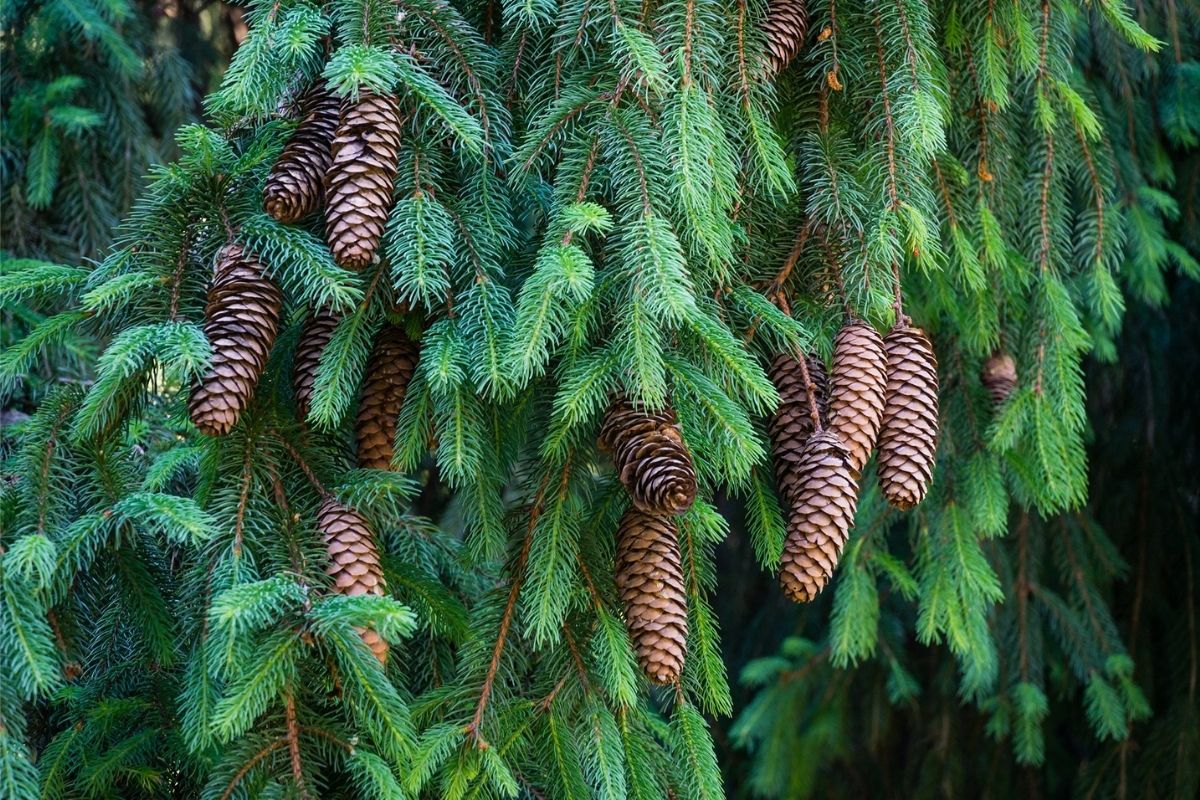
Ever wondered about the fascinating world of Picea? Commonly known as spruce trees, these majestic giants are more than just a pretty sight in forests. Spruce trees belong to the genus Picea, which includes about 35 species. These trees are native to the northern temperate and boreal regions of the earth. Spruce wood is highly valued for its strength and light weight, making it a popular choice for construction, paper production, and even musical instruments. Did you know that some spruce trees can live for over 1,000 years? Their needles are arranged spirally on branches, and they produce cones that hang downwards. Whether you're a nature enthusiast or just curious, these 25 facts about Picea will surely spruce up your knowledge!
What is Picea?
Picea, commonly known as spruce, is a genus of about 35 species of coniferous evergreen trees. These trees are native to the temperate and boreal regions of the Northern Hemisphere. Spruces are known for their tall, straight trunks and conical shape, making them popular for timber and ornamental purposes.
- Picea trees can grow up to 200 feet tall, making them some of the tallest trees in the forest.
- The needles of Picea trees are attached singly to the branches, unlike pine trees where needles are grouped.
- Spruce wood is highly valued for its strength-to-weight ratio, making it ideal for construction and musical instruments.
- Picea trees produce cones that hang downwards, which helps in seed dispersal by wind.
- The bark of spruce trees is thin and scaly, providing minimal protection against forest fires.
Types of Picea
There are several species of Picea, each with unique characteristics. Understanding these differences can help in identifying and appreciating these majestic trees.
- The Norway spruce (Picea abies) is one of the most widely planted spruces in Europe and North America.
- The Sitka spruce (Picea sitchensis) is the largest species of spruce, native to the west coast of North America.
- The White spruce (Picea glauca) is known for its bluish-green needles and is commonly found in Canada and the northern United States.
- The Black spruce (Picea mariana) is a slow-growing species often found in boggy areas and cold climates.
- The Blue spruce (Picea pungens) is popular in landscaping due to its striking blue-colored needles.
Uses of Picea
Spruce trees are not just beautiful; they are incredibly useful in various industries. From construction to medicine, Picea has a wide range of applications.
- Spruce wood is commonly used in the construction of houses, furniture, and paper products.
- The resin from spruce trees has been used historically for making pitch, a waterproofing material.
- Spruce needles are rich in vitamin C and have been used to make tea to prevent scurvy.
- The essential oils extracted from spruce needles are used in aromatherapy for their calming effects.
- Spruce wood is a preferred material for making soundboards in pianos and guitars due to its excellent acoustic properties.
Ecological Importance of Picea
Spruce trees play a crucial role in their ecosystems. They provide habitat and food for various wildlife species and contribute to the overall health of forests.
- Spruce forests are home to numerous bird species, including the spruce grouse and various woodpeckers.
- The seeds of spruce cones are a vital food source for small mammals like squirrels and birds.
- Spruce trees help in stabilizing soil and preventing erosion, especially in mountainous regions.
- The dense canopy of spruce forests provides shelter and protection for many understory plants and animals.
- Spruce trees are important carbon sinks, helping to mitigate climate change by absorbing carbon dioxide from the atmosphere.
Interesting Facts About Picea
Beyond their practical uses and ecological importance, spruce trees have some fascinating characteristics and historical significance.
- The oldest known spruce tree is over 9,500 years old and is located in Sweden.
- Spruce trees have a unique ability to survive in extremely cold temperatures, with some species thriving in the Arctic Circle.
- During World War II, spruce wood was used to make aircraft frames due to its lightweight and strong properties.
- The traditional Christmas tree is often a spruce, with Norway spruce being a popular choice.
- In folklore, spruce trees are often associated with protection and were planted near homes to ward off evil spirits.
Final Thoughts on Picea
Picea, or spruce trees, are more than just towering giants in forests. They play a crucial role in ecosystems, providing habitats for wildlife and contributing to the global carbon cycle. From their unique needle-like leaves to their impressive height, spruces are fascinating. They’ve been used for centuries in construction, paper production, and even musical instruments. Their resilience in cold climates makes them a symbol of endurance. Whether you’re a nature enthusiast or just curious, understanding these trees adds a layer of appreciation for the natural world. Next time you see a spruce, remember the incredible facts behind this majestic tree. It’s not just a tree; it’s a vital part of our planet’s health and history. So, keep exploring and learning about the wonders around us.
Was this page helpful?
Our commitment to delivering trustworthy and engaging content is at the heart of what we do. Each fact on our site is contributed by real users like you, bringing a wealth of diverse insights and information. To ensure the highest standards of accuracy and reliability, our dedicated editors meticulously review each submission. This process guarantees that the facts we share are not only fascinating but also credible. Trust in our commitment to quality and authenticity as you explore and learn with us.
